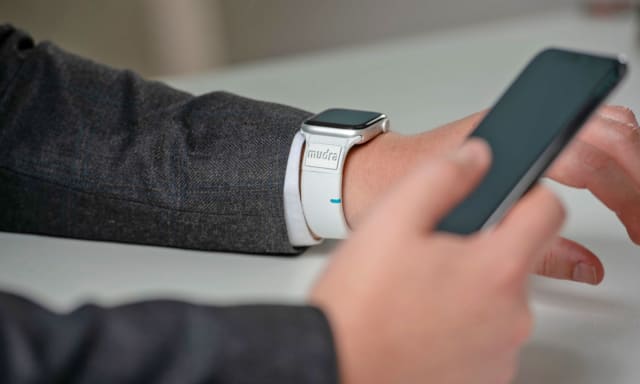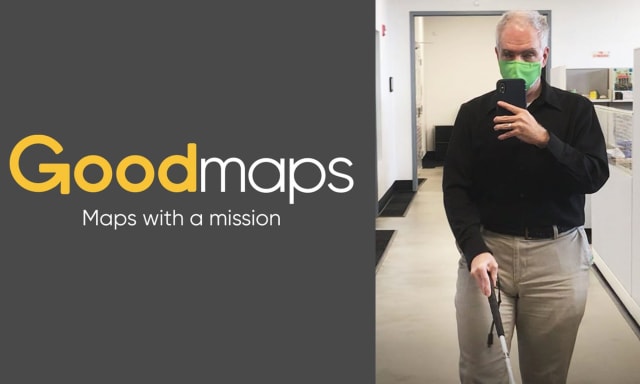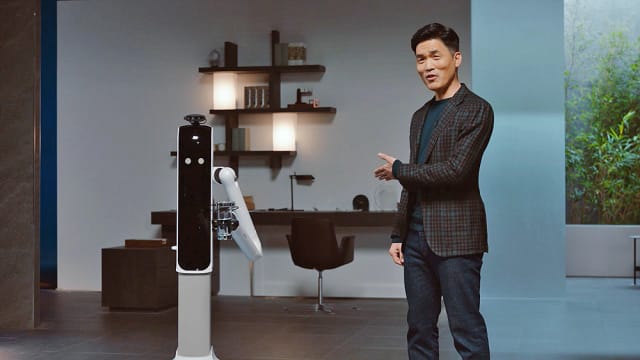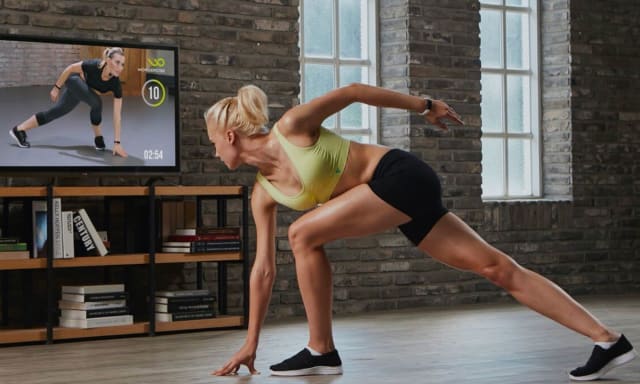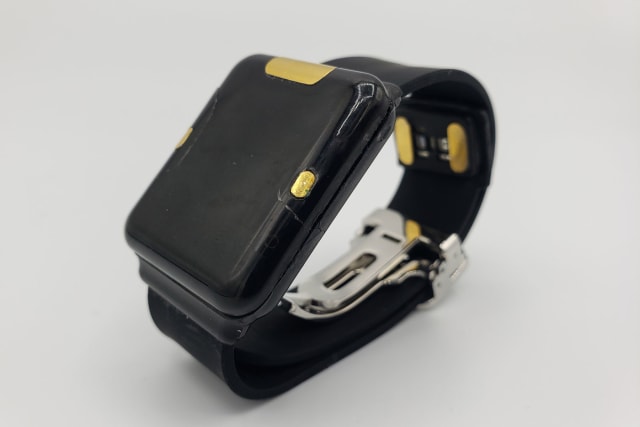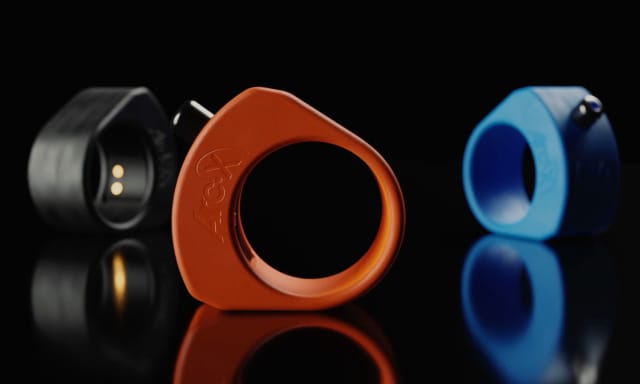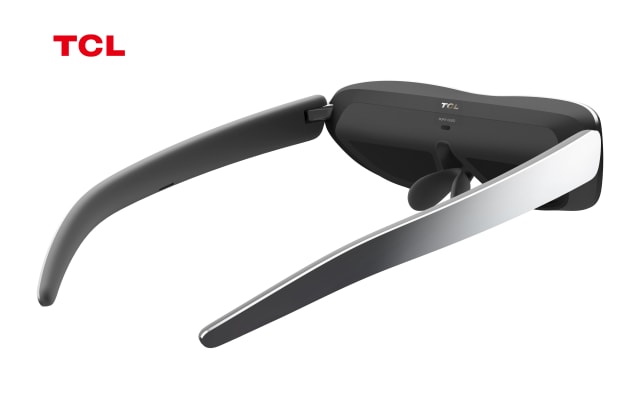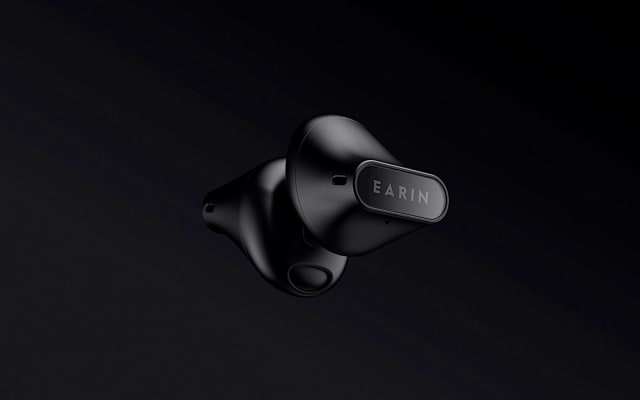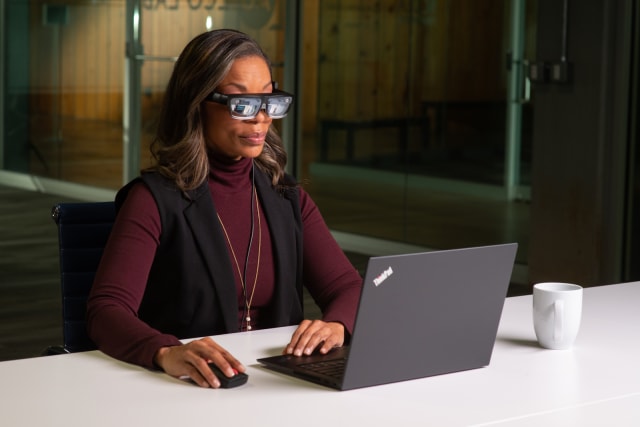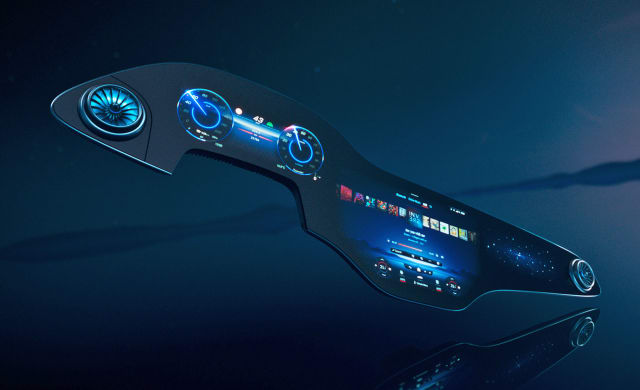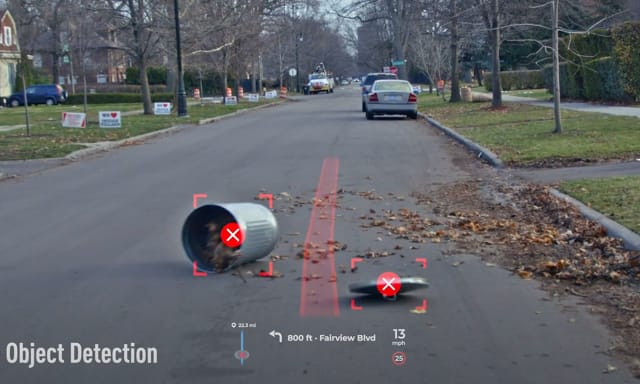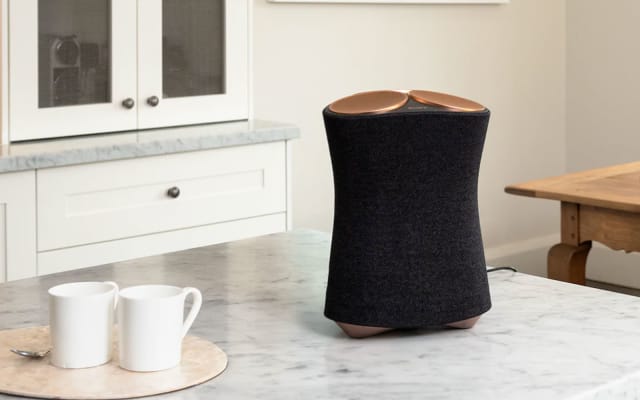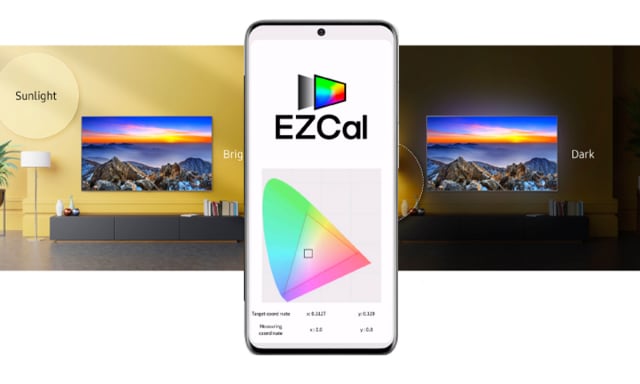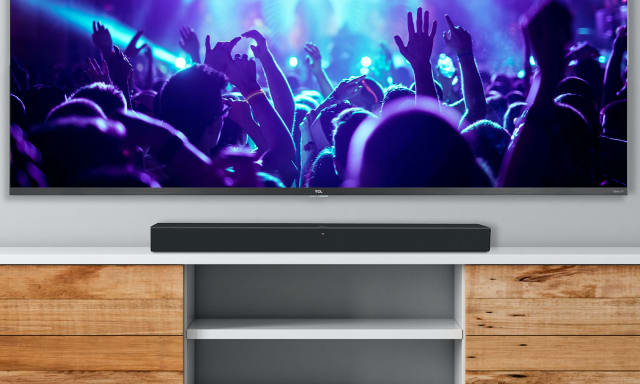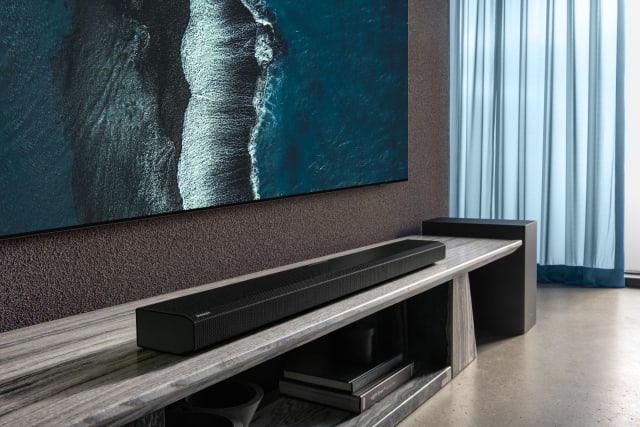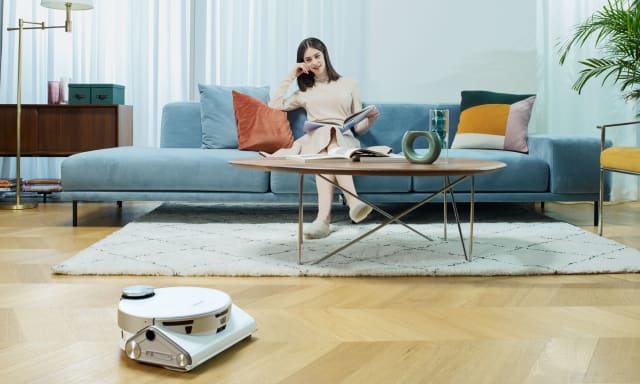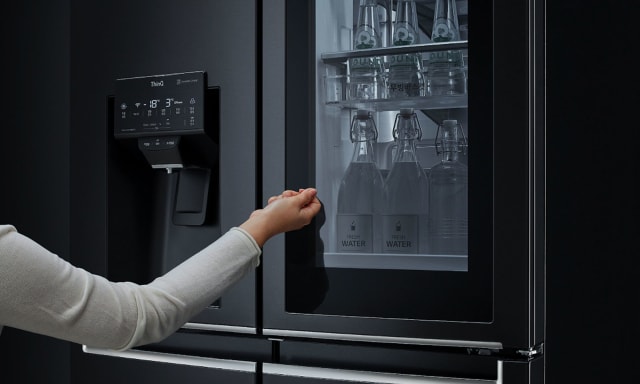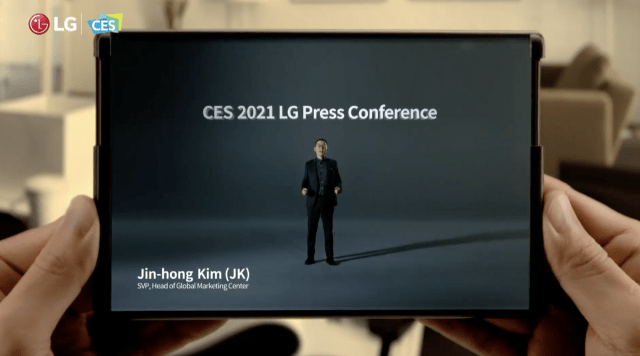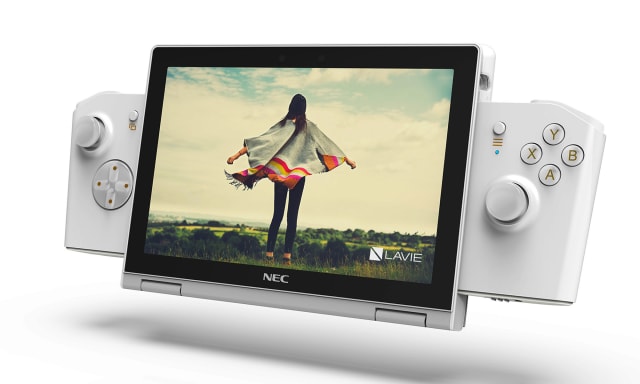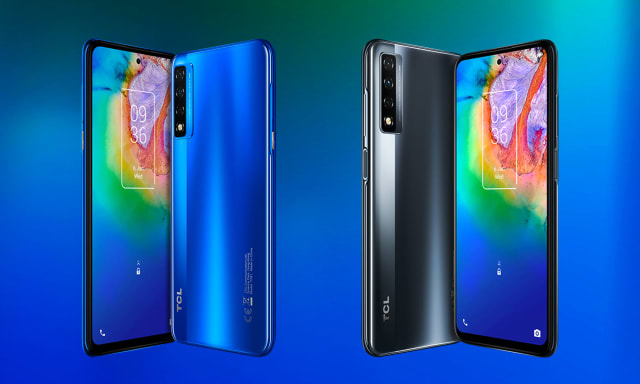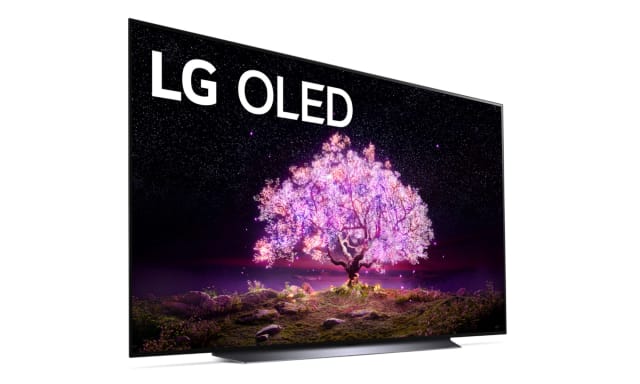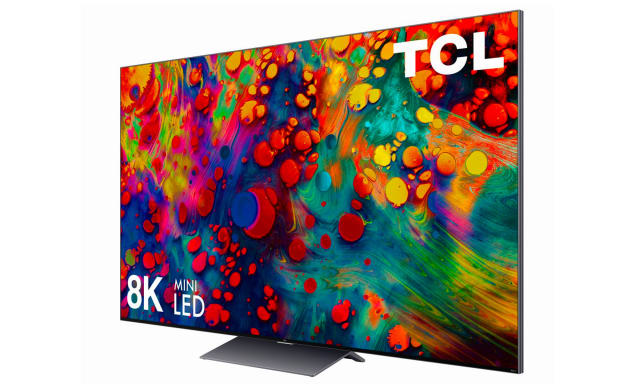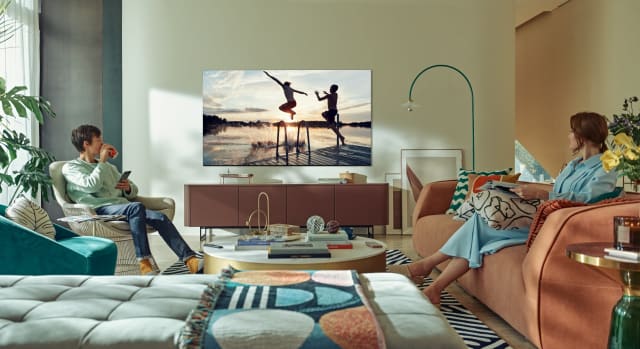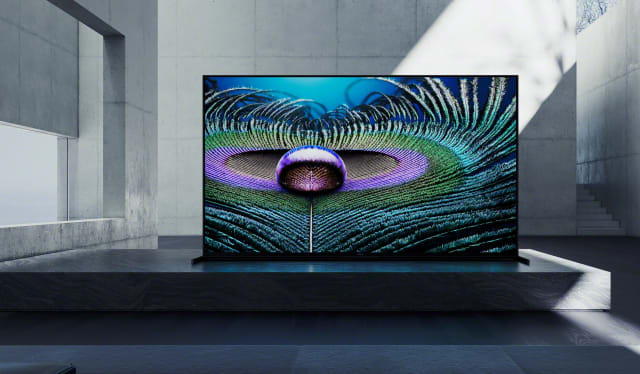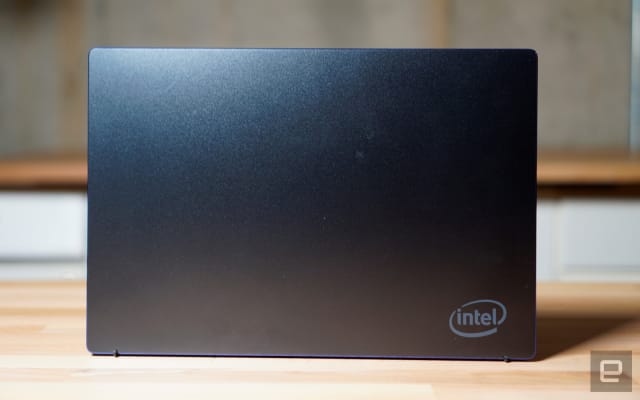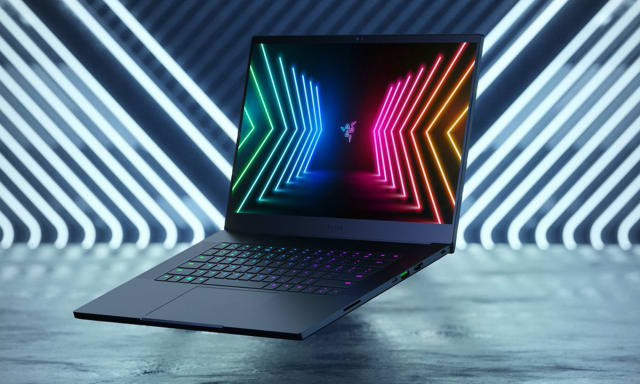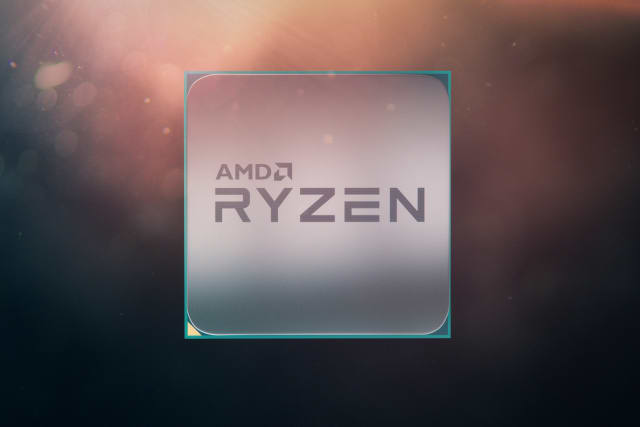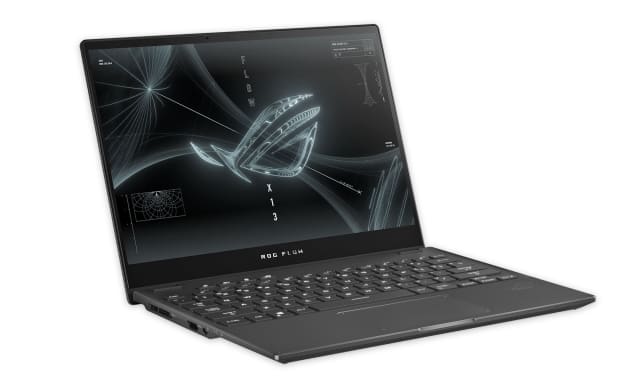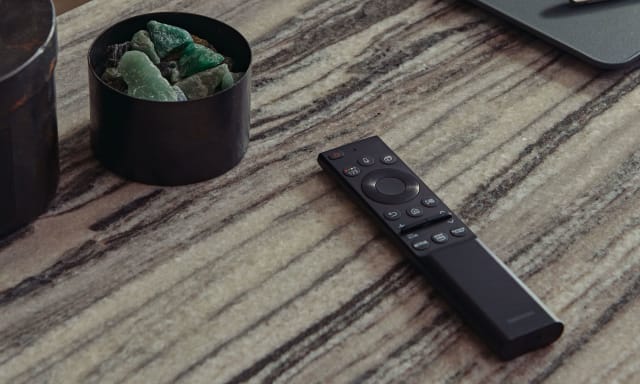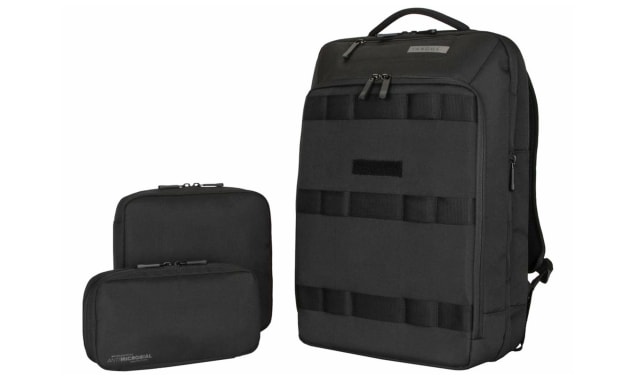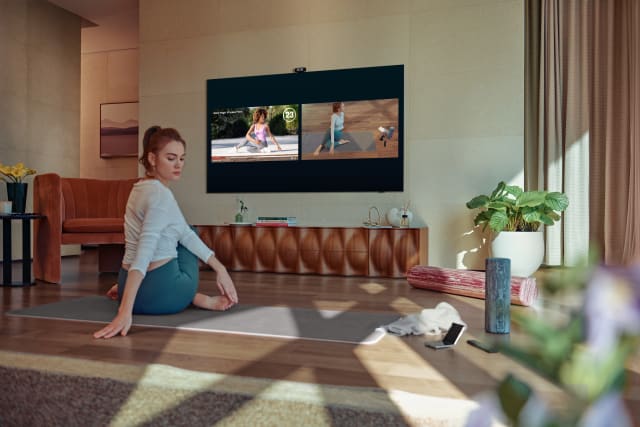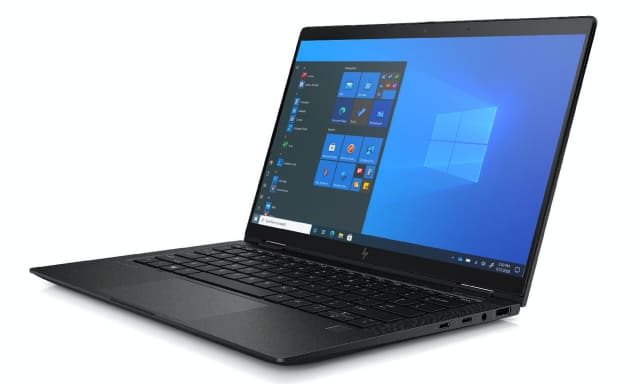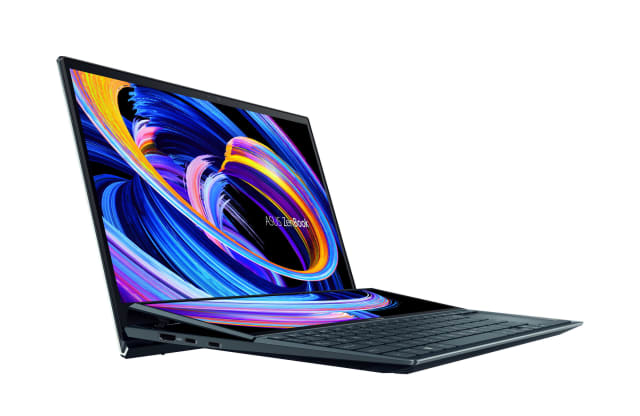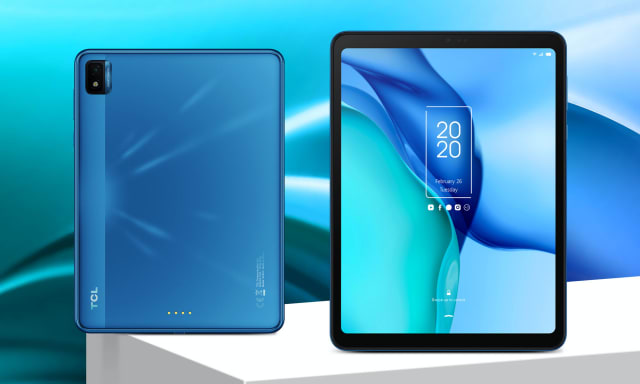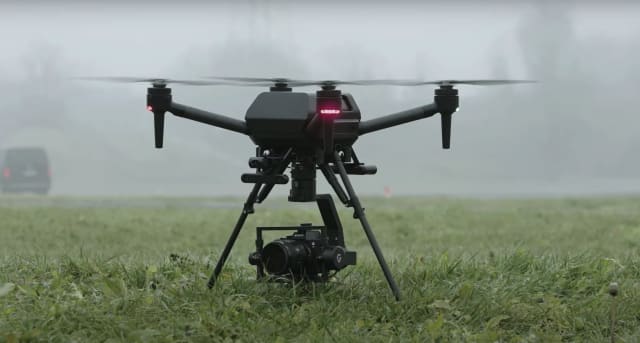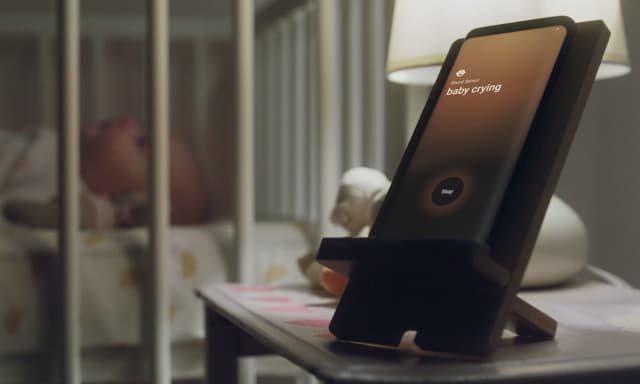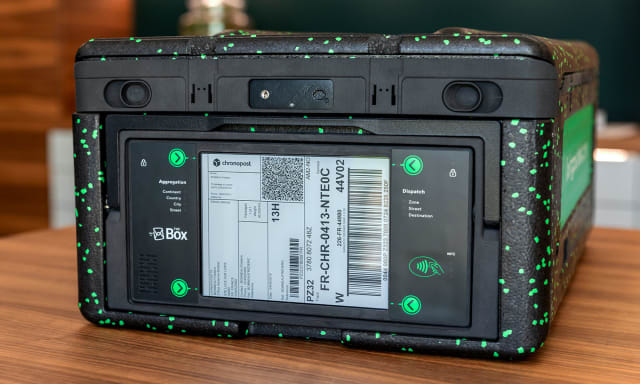Presenting the Best of CES 2021 Finalists The show may be smaller this year, but there were still plenty of standouts.
This story originally appeared on Engadget

We'll admit, we weren't entirely sure what to expect when we agreed to judge the annual Best of CES Awards without an in-person show. How many companies would show up to an online-only show? What would we lose without being able to wander the halls of a massive convention center and see the products up close? As it turns out, we needn't have worried. More than 1,900 brands, big and small, turned up this year, according to the Consumer Technology Association, the industry group that organizes the show each year. What's more, many companies found socially distant ways to show us their latest and greatest in person, ahead of the show. (That's especially useful for the TV category, wouldn't you say?)
In the end, we had enough fodder for 14 categories covering hardware and services in every sector from home theater to transportation to accessibility tech. We'll announce the winners tomorrow at 4:30pm ET during a ceremony on our virtual stage, which we'll livestream to Engadget.com and our YouTube channel. We're also continuing tradition and opening up voting for our People's Choice Award — our reader poll is live now and closes tomorrow, ahead of the ceremony. Please be sure to vote, and congrats to all of the finalists! — Dana Wollman, Engadget Editor-in-Chief
Best Accessibility Tech
Wearable Devices Ltd. Mudra Band
Wearable Devices Ltd.
The technology underpinning the Mudra Band might seem fanciful: sensors capture neural electrical impulses in the wrist and map them onto specific movements like a swipe or a tap, essentially letting you control an Apple Watch with subtle finger movements on one hand. There's no doubt the benefit of convenience — you can operate your watch when your hands are wet or dirty, for instance. But some of the most interesting implications of this technology might relate to accessibility, like helping amputees use their devices. The band connects to the Apple Watch via Bluetooth, making it a simple integration with compelling possibilities. — Chris Ip, Features Editor
GoodMaps Explore (presented by American Printing House for the Blind)
Goodmaps
GoodMaps Explore is a navigation tool that's all about the next step. Designed for people who are visually impaired or blind, the app delivers detailed directional information through a combination of text and clear, responsive voice commands. Hold up your phone and the app will identify nearby businesses, streets and points of interest, adapting as you move and reading out cardinal directions along the way. The team has begun mapping the inside of buildings using LiDAR as well, and plans to bring the GoodMaps Explore technology to more indoor spaces over time. GoodMaps and the American Printing House have partnered on the app, which is now available on Android after initially launching on iOS. — Jessica Conditt, Senior Editor
Samsung Bot Handy
Samsung
Samsung's CES 2021 presentation showcased a desk-bound woman in a leg cast, assisted only by her robot, Bot Handy. With an extendable gripper arm, the robot could load the dishwasher, pour a drink, and perform other delicate household tasks. The demo is just that: an illustration of how Samsung's AI can identify and physically handle objects of different shapes and fragility. But it's easy to imagine that some of the most meaningful applications of this technology could be in assisting people with physical disabilities. — C.I.
Best Digital Health and Fitness Product
Omron VitalSight
Omron
Over the last 10 months, leaving the house and entering hospitals has become especially fraught for those whose health is most vulnerable, while doctors have faced challenges diagnosing patients remotely, without their equipment. Omron's VitalSight service includes a connected blood pressure monitor that links directly with patients' physicians, so healthcare professionals can monitor for signs of trouble without requiring regular in-person checkups. Omron already has a reputation for making top smart blood pressure monitors, but VitalSight happens to be ideal for pandemic-era telehealth. — C.I.
Wondercise Live Motion Matching System
Wondercise
Wondercise is one of many on-demand fitness services available right now, but it's more focused on form than anything else. The company brought Apple Watch integration to its service at the end of last year, and for CES, it's introducing arm and leg bands as part of its new "multi-point motion matching system." These sensor-laden straps work with your smartwatch of choice (be it the Apple Watch, a Garmin device or the company's own band) to track real-time movements and compare them to those of an on-screen instructor. A score indicating how well you're mirroring the trainer's movements shows up on the video, so you know immediately if you need to adjust. On top of that, the IMU sensors track heart rate and cardio burn, and the battery is rated for at least seven days on a charge. — Valentina Palladino, Commerce Editor
Quantum Operation Non-invasive Blood Glucometer
Quantum Operation Inc.
When you're unable to see a product in person, it can be hard to be sure if the device can deliver on its promises. But if Quantum Operation has managed to solve the problem of non-invasive glucose monitoring, then its new wearable will become a must-have for diabetics the world over. One in 10 Americans have diabetes and a continuous blood sugar monitor that doesn't require a finger-prick test would be a huge deal. It may also help the rest of us better manage our sugar intake if — and it's a big if — the technology is as effective as its creators claim. — Daniel Cooper, Senior Editor
ArcX Smart Ring
ArcX
When you're out running, cycling or on the water, the last thing you want to do is to fiddle with your device while in motion. After all, breaking your run to touch your smartwatch to set a lap could knock precious seconds off your time. That's why ArcX's wearable joystick, which sits on your finger and can be controlled by your thumb, is such an ingenious solution. The Bluetooth remote lets you control your phone or watch from your clenched fist, making for an elegant — and possibly safer — user experience. — D.C.
Best Wearable
Wearable Devices Ltd. Mudra Band
Wearable Devices Ltd.
The $179 Mudra band from Wearable Devices brings gesture control to the Apple Watch, but it's not just for early adopters. The band, which attaches like any other Apple Watch strap and connects to the wearable via Bluetooth LE, has a sensor inside that detects electrical signals sent by your brain to your fingers. It then uses a deep-learning algorithm to analyze those signals and map them to finger motions you'd use on the Watch's touchscreen to open apps, type out a short text and more. This is not only an intriguing new way to interact with your Apple Watch, but it could also be useful for those with certain disabilities: The company already built a proof of concept that allows ALS patients to type on a virtual keyboard. — V.P.
TCL Wearable Display
TCL
After years of showing its prototype at various tradeshows, TCL is finally ready to share some launch details about its heads-up display. Simply called the TCL Wearable Display for now, the headset stands out for its simplicity. It has two Full HD OLED screens that create a 140-degree field of view... and that's it. There's no battery onboard or chunky arms for processors (although a small onboard chip powers the displays). Just connect the device to your phone, laptop or tablet via USB-C to project your media to the glasses. Because it's so simple, the Wearable Display is one of the lightest and smallest headsets of its kind that we've seen. While we wait for details on pricing, availability and the types of content that will be supported at launch, it's encouraging to see TCL is close to bringing the device to the masses. — Cherlynn Low, Reviews Editor
Earin A-3
Earin
The latest earbuds from Earin, the A-3, experiment with the sort. of open design that only a few companies have attempted in the past (most notably, Samsung's Galaxy Buds Live). The A-3 are shaped almost like little discs with thin ovals slightly sticking out of one side. Not only are they much more discreet than standard earbuds, but they have no left or right designation so you can freely swap them between ears. The open design lets you listen to tunes while also allowing you to hear what's going on around you. Although they don't have active noise cancellation, the A-3 include wind noise reduction algorithms to improve the listening experience. They're also sweat, splash and dust resistant and have up to 30 hours of battery life with the included wireless-charging case. — V.P.
Lenovo ThinkReality A3 Smart Glasses
Lenovo
Sure, augmented reality glasses for enterprise aren't the most approachable product. But Lenovo's ThinkReality A3 headset has plenty of intriguing features that might one day change the way we work. For starters, the A3 can support up to five virtual 1080p displays at once, allowing for better multitasking in augmented reality. The A3 is also less bulky than its predecessor, and offers dual fish-eye cameras for room-scale tracking in addition to an 8-megapixel camera for video calls. Though the device uses a relatively old Snapdragon XR1 processor (the XR2 came out in 2019), Lenovo is one of few companies to continue working on a HoloLens competitor. For the industries that might benefit most from a hands-free AR experience, a device like the ThinkReality A3 is a reminder that companies haven't given up. — C.L.
Best Transportation Technology
Mercedes-Benz Hyperscreen
Mercedes-Benz
When Mercedes' new EQS luxury electric SUV arrives later this year, folks may have difficulty not staring — at its monumental cabin display, that is. Measuring 56 inches across (nearly the entire width of the vehicle's interior) the MBUX Hyperscreen will serve as an all-in-one replacement for the existing driver's instrument cluster, navigation screen and infotainment system. It even adds a secondary "screen" on the passenger side for the rider's convenience. This entire setup runs on its own integrated eight-core CPU with 24GB of RAM. And, unlike earlier iterations of the MBUX, the Hyperscreen has been designed with a "zero layer" aesthetic, ensuring that the most critical controls are always within arm's reach and not buried in a byzantine menu system. — Andrew Tarantola, Senior Editor
Volvo Penta Assisted Docking System
Volvo
Most of us have probably never had to dock a boat before, much less in whipping winds or a quick moving tide. And if you're trying to park your ride in a particularly crowded marina, you've probably got other boats to contend with. Two years ago, Volvo Penta (the maritime arm of Volvo) demoed a self-docking system that attempted to remove human error from the equation. Now, it's going to become a commercial reality. The Volvo Penta Assisted Docking system is basically the same as the assisted parking feature on many high-end cars, but for boats. Using GPS and other on board sensors it can make adjustments on the fly to slide your yacht into even the tightest spots. — Terrence O'Brien, Managing Editor
Panasonic Automotive AI-enhanced AR HUD
Panasonic
Navigating through unfamiliar streets is challenging enough even when you're not glancing at Google Maps on your phone or your navigation screen every few seconds. But with Panasonic's prototype AI-powered augmented reality HUD, drivers will get exactly the information they need without taking their eyes off the road. It's equipped with eye tracking technology to ensure that the projected 4K resolution images always remain in focus, along with AI navigation capabilities that monitor traffic around the vehicle up to three lanes away, overlaying GPS guidance while highlighting traffic hazards. — A.T.
Best Home Theater Product
Sony 360 Reality Audio speakers (SRS-RA5000 and SRS-RA3000)
Sony UK
Two years after Sony debuted its 360 Reality Audio platform at CES 2019, the company is preparing to ship the first speakers built for this immersive sound ecosystem. The SRS-RA5000 and SRS-RA3000 are WiFi-connected wireless units that work in a similar fashion to Sonos. If the music you're listening to isn't in the 360 format, the speakers are equipped with an algorithm that converts the content. — Billy Steele, Senior News Editor
Samsung C-Lab EZCal
Samsung C-Lab
New TVs are capable of amazing image reproduction, but if they're not set up correctly then all of those pixels will go to waste. Calibration setups that involve users phones have started to become common with more precise control of settings at very deep levels, but Samsung's experimental C-Lab division proposes automating the process altogether. Your phone is capable of judging the screen's output and ambient lighting conditions, so why not let AI do the work of setting things up while you pick out something to watch? — Richard Lawler, Senior News Editor
TCL Alto R1 soundbar
TCL
This Roku TV Ready soundbar doesn't require you to run a cord to your TV, offering a wireless setup that keeps your living room free of another cable. All you need to do is plug in the Alto R1 and it guides you through the setup. You can also use your TV's remote to control sound, and TCL promises better audio syncing, simple settings and automatic software updates. — B.S.
Samsung HW-Q950A Q-series soundbar
Samsung
Samsung is taking things a step further on multiple fronts this year when it comes to its flagship Q-series soundbar. First, the HW-Q950A offers 11.1.4 channel surround sound with both upward- and side-firing speakers. That's an improvement over the 9.1.4 spec on the company's previous model, which was already the most audio channels supported in a single soundbar. Samsung also added calibration mics to the included subwoofer to better tailor the setup to your living room. Plus, all of the usual connectivity and compatibility is here: AirPlay 2, HDMI eARC Dolby Atmos, DTS:X and more. — B.S.
Best Connected Home Product
Samsung JetBot 90 AI+
Samsung
Samsung's JetBot 90 AI+ gives the humble robot vacuum some new AI-powered smarts. It combines LiDAR and 3D sensors with object-recognition algorithms to be really good at knowing what's on your floors. For example, the device should be able to recognize small, circular objects like cereal or pet food and vacuum them up while avoiding messes it can't properly clean up (like an accident your dog had). All these sensors help the vacuum plan the most efficient route around a room while helping it avoid fragile objects entirely. It can even lower itself under furniture if needed. These smarts don't seem. superfluous either — they should help the vacuum better achieve its goal of keeping your home clean. — Nathan Ingraham, Deputy Managing Editor
TP-Link Deco Voice X20
TP-Link
TP-Link's new Deco Voice X20 isn't the first router that also functions as a smart speaker. But this Alexa-powered mesh networking system works with the relatively new WiFi 6 standard, giving it a leg up in speed over similar options like Google's Nest WiFi system. TP-Link is selling them in a two-pack, which should be enough to blanket 4,000 square feet with fast WiFi 6 coverage. At the same time, you'll have multiple smart speakers around your house right off the bat. It sounds like an ideal starter kit for improving your WiFi and getting into the Alexa game. — N.I.
LG InstaView Refrigerator with Voice Recognition
LG
LG's InstaView Door-in-Door refrigerators have always been some of the most high-tech on the market. The signature feature is a see-through mirrored glass panel that lights up with two quick knocks so you can take a quick peek without opening the door. This year's model brings a few new features, most notably voice recognition. Now you can open the door just by saying "Open the refrigerator door," which is great if you have your hands full. You can also ask for the day's agenda or check if you're low on ice or water. What's more, the new fridges have UVnano tech built into the water dispenser to help reduce bacteria. — Nicole Lee, Senior Editor
Sony 360 Reality Audio speakers (SRS-RA5000 and SRS-RA3000)
Sony UK
Sony is ready to take on Sonos with the SRS-RA5000 and SRS-RA3000. They utilize Sony's own 360 Reality Audio immersive audio platform, which impressed us back when the company first demonstrated it to us two years ago. The RA5000 houses seven total drivers while the RA3000 uses five, and are both capable of filling the room with ambient sound. These WiFi-connected speakers can be controlled with a Google Assistant or Amazon Alexa device, and you can use them as part of a multi-room audio system. — N.L.
Best Phone or Mobile Device
LG Rollable
LG
LG has sat out the foldable smartphone craze so far, and this week we got some clues as to why that is. During the briefest of teasers at the top and bottom of its CES press conference, the company officially showed off the Rollable, a smartphone with a full-size display (instead of a too-narrow one like the Samsung Galaxy Z Fold 2's external screen) that unfurls to become a small tablet. For now, the Rollable is still shrouded in secrecy, but there are two things we know for sure about it. First, LG is committed to releasing it this year. And second, it's perhaps LG's best chance to get people excited about their phones again. — Chris Velazco, Senior Mobile Editor
Lenovo NEC Lavie Mini
Lenovo
Thinking of the Lenovo-made NEC Lavie Mini as just a tiny laptop is to miss the point. Yes, you could plop it on a table and send some emails, or edit documents on its 8-inch screen. That said, the president of Lenovo Japan himself told us he nurtured this concept machine because he wanted an ultraportable PC powerful enough to play his favorite flashy games, but small enough that people could hold it in both hands and peck out messages with their thumbs. The end result: a strange, charming netbook lookalike that doubles as a game console and a huge phone. Consider us intrigued. — C.V.
TCL NXTPAPER
TCL
TCL teased its full-color paper-like NXTPAPER display last year, and now it's arrived in an actual device: an 8.89-inch Android tablet awkwardly called the TCL NXTPAPER. The company claims that the low-power reflective LCD combines paper-like readability (in color!) with relatively high framerates. NXTPAPER can play videos at 30 frames per second, which is much better than the E Ink displays found in typical e-readers.
Until now, color e-readers have been a niche category, but the NXTPAPER combines this functionality with Android tablet features, including video playback, responsive web browsing and standalone apps. All told, it makes for a compelling package. — Mat Smith, UK Bureau Chief
TCL 20 5G
TCL
TCL made a splash at this year's CES, and its latest phones, while not the most headline-grabbing reveal, could help the company establish itself as a mobile force to be reckoned with. The TCL 20 5G ticks a lot of the boxes you'd hope it would. There's a big 6.67-inch display with a cut-out front camera and HDR10 support; a Snapdragon 690 processor with 5G support; and an array of cameras around back. That includes a 48-megapixel main camera, 8-megapixel ultra-wide sensor and a 2-megapixel macro camera. In Europe, the phone will retail for €299, roughly $365. Although TCL isn't pushing the boundaries of what smartphones can do, then, the pricing here forces us to consider, once again: Do you need a thousand-dollar smartphone? — M.S.
Best TV Product
LG C1 OLED
LG
LG's latest OLEDs don't change up the company's formula too much — they still have gorgeous screens with rich colors and incredibly deep black levels — but now they feature the company's Alpha 9 Gen 4 AI processor, which promises far better image processing. The company claims it can "analyze and optimize content" and improve picture quality on a scene by scene basis. (But of course, you can always turn that off.) The C1 OLED TVs also feature LG's Sound Pro, which can produce a virtual 5.1.2 surround sound up-mix with its built in speakers, and they run an upgraded OS, webOS 6.0. — Devindra Hardawar, Senior Editor
TCL 6-Series (8K)
TCL
Two years ago, TCL's 6-Series Roku TV was among many good value-priced 4K options. Last year, TCL refreshed the lineup with mini LED technology that competitors are only adding just now. Now, TCL is betting that this is the right time to switch to shift its mainstream TV to 8K. These TVs feel like they're bringing the future to us now, and at an "accessible" price. — R.L.
Samsung Neo QLED
Samsung
Every year, Samsung pushes LCD TVs to a new level of excellence, and for 2021 it's adding mini LED backlighting to the package. That should give these TVs an advantage when it comes to contrast, with lights that are 1/40th the size of traditional tech. Samsung didn't stop there either: For 2021 it rethought everything from the slim, bezel-less design to the more recyclable box your TV will come in. Google Duo, FreeSync Premium Pro and easy wireless connections to your PC come built in, as well as an advanced audio setup that combine with a matching soundbar for improved audio. And did we mention that the remote can charge its battery from sunlight? — R.L.
Sony Cognitive Processor XR
Sony
Perhaps more so than any other TV maker, Sony's devotion to image processing is legendary. After all, it doesn't matter what your display is made of if it has trouble actually rendering images. With the Cognitive Processor XR, Sony says it's taking a step beyond "AI" image processing and closer towards the way our brains handle images. The chip gives Sony's new Bravia XR TVs the ability to analyze a scene in real time and devote improved image quality to the sections your eyes are drawn to. It could be a face in a close-up, or the lights on a billboard as a character walks through a city. According to Sony, the Cognitive Processor XR will also be a huge help for 8K upscaling, as well as refining such a large image. — D.H.
Best Gaming Product
Intel Tiger Lake-H laptop chips
Engadget
Intel announced a number of CPUs at CES this year, but it's Tiger Lake-H that looks set to make the biggest impact. Rather than go for all-out power or battery life, the H series strikes an interesting balance. With a relatively conservative 35W power target, the chips focus more on high clock speeds than many cores, with the 35W line maxing out at four cores but able to hit peak turbo speeds of 5GHz. Intel believes the new chips will create a new gaming laptop segment, one that's capable of playing games at 1080p while looking more like an ultraportable. — Aaron Souppouris, Executive Editor
Razer Blade 15 with NVIDIA RTX 30 graphics
Razer
Razer's Blade series has long been among the best laptops money can buy, mixing outrageous performance with, by gaming standards, subdued looks. This year, Razer's updates are significant. NVIDIA's latest RTX 30 series graphics will improve performance significantly over previous models, but it's the display we're most excited about: 1440p is a sweet spot for desktop PC gaming, and you'll be able to pick up this year's Blade with an ultra-fast 240Hz 1440p panel. — J.C.
AMD Ryzen 5000 laptop chips
AMD
AMD continued its resurgence in desktop chips last year with its 5000 series CPUs. At CES, the company announced a full lineup of CPUs based on the same Zen 3 cores for laptops. There's all-out power from chips like the 5900H, which looks like it will keep pace with most desktop CPUs, but there's also chips like the 5600U, which are designed for ultra-portables with long battery life and strong performance. In 2021, it seems the best laptops will leave all but the strongest desktop PCs wanting for power. — A.S.
ASUS ROG Flow X13
ASUS
The ASUS ROG Flow X13 is lightweight, slim and convertible, while packing enough power to run current-gen games and render art in 4K. It has an eight-core Ryzen 9 5980HS CPU and dedicated NVIDIA GeForce GTX 1650 GPU, plus a 360-degree hinge and touchscreen. However, if you need a little more juice in the tank, the laptop also supports an external dock to expand its graphics capabilities, incorporating a GeForce RTX 3080 GPU that connects directly to the CPU. At just 13 inches wide, 15.8mm thick and 2.9 pounds, the ROG Flow X13 is ultraslim and extra sleek, inside and out. — D.C.
Most Unexpected Product
Volvo Penta Assisted Docking System
Volvo
If you've never piloted a boat, you may think the experience is like driving a car, except with a bigger wheel. But the road doesn't actively try and push you away from your destination the way the sea does even on a quiet day. That's why Volvo Penta's Assisted Docking System is so compelling, since it uses the vessel's on-board sensors and a computer to compensate for the natural variation in the water. The only thing the pilot needs to do is point their joystick in the right direction and the computer does the rest. Sure, for now this will be the reserve of bougie yacht owners, but hopefully it'll open up to others in the next few years. — D.C.
Samsung Solar Cell Remote
Samsung
It's ridiculous that remote controls, one of the most common devices found in the home, still use AAA batteries even though most other things have switched over to rechargeable solutions. That's what makes Samsung's announcement of the Solar Cell Remote such a pleasant surprise — it can be powered off outdoor and indoor light, or supplemented with USB power if it's too dark. Best of all, you won't have to wait too long to check one out, as they'll be included with all of Samsung's 2021 TVs. — Kris Naudus, Buyer's Guide Editor
Targus 2Office Antimicrobial Backpack
Targus
"Unexpected" is such a tricky thing to define when you can find pretty much anything at CES if you look in the right corner. And while COVID-19 has been on everyone's mind, the fact that a major luggage and accessory maker has made a product like this is still fairly surprising. The 2Office Antimicrobial Backpack has germ-killing coatings on "key touchpoints" to help cut the risk of picking up something nasty. It looks like, if this is any indication, we're going to see companies promote how good their gear is at killing germs for years to come. — D.C.
Kohler Stillness Bath
Kohler
You can outfit your home with mood lighting for movies and gaming, and now Kohler would like to see some color in your bathroom as well with its Stillness Bath. But it's not just cool blues and soothing pinks that make this Japanese-styled tub a soothing repast, but a fog generator and even scent for that full at-home spa experience. It's sure to cost a pretty penny, but it also may make a good alternative in a year when you can't make it to a sauna. — K.N.
Best Sports Tech
Samsung Trainer
Samsung
With just a TV and a camera, Samsung's new Smart Trainer can help you maintain the proper form while working out. It's a new feature of the company's Health app, which debuted in its TVs last year. Using the help of a third-party camera (most any webcam will work), the app will tell you if your push-ups are straight enough or if you're holding your plank properly. It even counts reps for you, which is great for the absent-minded among us. — N.L.
Wondercise Live Motion Matching System
Wondercise
Wondercise's on-demand workout service has used wearables like the Apple Watch and Garmin devices to track your exercise form for a while now, but in 2021, the company has added hardware to the mix. They're essentially IMU sensor straps that you can add to your existing wearable that promise to make arm-and-leg tracking even more accurate. You'll see alerts on the video if your form is aligned with the trainer's, and if it isn't, it'll prompt you to correct your stance. — N.L.
Best PC or Tablet
HP Elite Dragonfly Max
HP
Setting aside HP's ludicrous marketing claim that the original Elite Dragonfly was "lighter than air," the company's thin and light business laptop was truly impressive. With the new Dragonfly Max, HP expands the series and brings features like a 5-megapixel webcam and an embedded Tile tracker. That's one of the sharpest cameras on a laptop yet, in one of the lightest notebooks around, too. As part of a growing trend, the Dragonfly Max's screen also meets Eyesafe requirements for vision protection. It also comes with features like a mechanical webcam shutter and built-in privacy screen that should appeal to those looking to shield themselves from prying eyes. The Dragonfly Max shows that HP wasn't just making a one-off gimmick with the original and is expanding the line thoughtfully with useful updates. — C.L.
Lenovo ThinkPad X1 Titanium Yoga
Lenovo
Dubbed the "thinnest ThinkPad ever" by Lenovo, the X1 Titanium measures a scant 11mm-thick and weighs just 2.5 pounds. And while it doesn't really stray too far from the company's ThinkPad aesthetic, it still manages to be an attractive looking notebook. As the name suggests, it relies on titanium to achieve that slim design while keeping its case sturdy. And since the X1 Titanium is a member of Lenovo's convertible Yoga family, you'll be able to spin its screen around in a variety of orientations. You can also look forward to a low-power 13.5-inch screen, Dolby Vision HDR, Atmos Sound and Dolby Voice to make you sound clear during conference calls. — D.H.
ASUS ZenBook Duo
ASUS ZenBook Duo 14
ASUS isn't giving up on dual-screen PCs anytime soon. The new ZenBook Duo is proof of that. It keeps the last model's wide 12.6-inch ScreenPad Plus, which sits right below its 14-inch main panel. But now that secondary display is brighter and angled up further when you open ZenBook Duo, making it seem as if it's even more connected to the top screen. The higher screen angle helps to reduce glare and makes it easier to move your fingers or mouse pointer across both displays. Consider it a refinement on an already solid concept.
ASUS also bundled in some more advanced dual-screen technology too -- now you can just "flick" apps between the screens, instead of dragging them. The 2021 ZenBook Duo also features Intel's 11th generation processors, Xe graphics, an optional NVIDIA GeForce MX450, and support for up to 32GB of RAM. It's not a gaming notebook — it's just got enough power to play the occasional round of Overwatch while helping you multitask like a boss. — D.H.
We were unable to reveal this finalist at the moment of publishing, which meant we were forced to exclude it from the People's Choice award.
TCL NXTPAPER tablet
TCL
It's not often that an Android tablet grabs my attention at CES, but thanks to its unique display tech, the TCL NXTPAPER has me intrigued. It's the first real product to use the company's new LCD-based screen, which reflects light to create a paper-like experience and does away with backlighting altogether. Because of that, the company says it's able to make devices that are much thinner and longer-lasting than before. Plus, NXTPAPER is capable of rendering full color, as well as animations and videos of up to 30 frames per second — something e-ink struggles with due to its low refresh rates. As an e-reader that also boasts Android apps and game or video playback, the TCL NXTPAPER is a fresh entrant in a fairly stale product category. — C.L.
Best Robot or Drone
Sony Airpeak AI drones
Sony
That sound? We presume it's the thud of fist on wood from DJI headquarters. Sony, about the biggest name in consumer technology and cameras, is officially in on the drone game. The newly unveiled Airpeak platform is a business-focused aerial platform, launching this spring. The quadcopter is strong enough to carry one of the company's Alpha mirrorless cameras yet Sony claims it's the smallest craft to be able to do so. Sony even claims Airpeak uses AI for improved stabilization. Specific details are sparse, but it's exciting to see a household name enter the space. — James Trew, Managing Editor
Vanguard Industries Moflin
Vanguard Industries
After quite the year, we bet you could use a hug right now. Moflin might not have the required limbs, but it's designed to give you the same good feels and is just generally adorable, to boot. Essentially, it's an AI, emotionally capable pet laden with sensors and connectivity options, allowing it to potentially get more capable over time. Whether you just want something responsive to stroke as you read a book, or a critter to nurture and grow with you, we can see this furry little bag of joy filling that spot perfectly. Even if just so we can watch it peacefully "sleep" (charge) in its delightful egg-shaped nest. — J.T.
Samsung Bot Handy
Samsung
We can all use a hand with household chores from time to time. Samsung's prototype domestic robot does exactly that but with a mechanical gripper. The Bot Handy uses cameras mounted on its head and extendable arm to identify the material composition of items around it — including their sizes, shapes and weights — simply by looking at them. This allows the robot to consistently use just the right amount of grip force when picking up and moving objects so it won't crack plates when loading the dishwasher or accidentally crush your delicate stemware when pouring drinks. There's no word on when, or even if, the Bot Handy will make it into production, but we're keeping our grippers crossed. — A.T.
Best Sustainability Product
Samsung Upcycling at Home
Samsung
It's a notion we've seen before: harnessing an unwanted smartphone's screen, mic and processor to create a single-use device like a security camera. Samsung's Galaxy Upcycling at Home program aims to streamline that conversion process. While details are still pending, we know that Samsung will release a software update allowing users to choose what they want their old phone to become. A baby monitor and light detector for the smart home were two of the examples showcased at CES. The apps themselves may not be the breakthrough technology here — the true innovation is that Samsung is smoothing the accessibility to those functions by building them right into its phones. — C.I.
Samsung Solar Cell Remote Control
Samsung
Sometimes crucial sustainability innovations are simple and small, but done at massive scale. Starting this year, Samsung TV remote controls will have solar panels built in, allowing them to recharge by both indoor and outdoor light. (There will be USB-C charging, too.) No need to cycle through rechargeable batteries or, worse, consume and throw out the single-use variety. On top of that, the remote control is made in part from upcycled plastic bottles. Given how many TVs Samsung sells each year, the net impact of this change could be significant. — C.I.
LivingPackets The Box
Living Packets
LivingPackets is developing a box. Not just any box, though: the kind that can be reused again and again. The company was nominated for an Innovation Award at CES last year. Since then, the team has developed a second-generation box with an integrated camera and sensors that measure temperature, humidity, pressure and other factors that could affect the goods inside. It also has an E Ink display, which can be used to display human and machine-readable shipping labels.
The team says that the revamped Box is rolling off the production line right now. It also used the show to announce a pilot program with Boulanger, a major electronics retailer in France. The Box could reduce our reliance on cardboard. It's always been a problem, but the ongoing coronavirus pandemic —which has forced many to shift their shopping away from bricks-and-mortar stores — has brought it into sharper focus. If enough retailers jump on board, LivingPackets could help society move away from boxes that are often thrown out after a single use. — Nick Summers, Senior Editor
Lasso
Lasso
Lasso wants to radically change how the world recycles. The startup is working on a stylish appliance that accepts seven types of material, including glass, plastic and aluminum. You submit materials and a series of cameras and sensors figures out whether they're recyclable. Approved items are then cleaned, ground down and organized into neat little boxes. Once your Lasso is full, you'll be able to open a smartphone app and schedule a curbside collection. Because the materials have already been processed, they can skip the recycling center and go straight to companies that have the expertise to turn them into brand new products.
The team behind Lasso is working on a prototype that should be completed this quarter. It will then move into a pilot phase, which will inform the final design. Despite this timeline, we're excited by the concept and the impact it could have on our environment. Everyone wants to recycle, but too much ends up in a landfill. That's because the rules surrounding what you can recycle vary from place to place. Sometimes materials are contaminated, too, because they contain leftover food or have been mixed in with non-recyclable materials. Lasso could solve these issues, reduce our reliance on recycling centers and make the world a greener place. — N.S.
